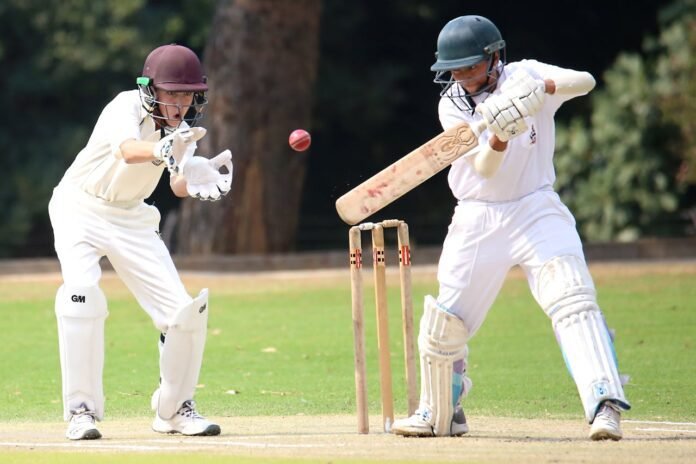Last Updated on March 8, 2025 by Aiman Emaan
Fantasy cricket has become a favorite pastime for cricket enthusiasts worldwide, offering the thrill of strategizing, selecting players, and competing with friends or other players. A key aspect of building a successful fantasy cricket team is finding the right balance between top-order and middle-order batters. These players play distinct roles in real-life matches, and understanding their contributions is essential to make informed decisions and maximize points.
In this article, we’ll explore strategies to balance top-order and middle-order batters in your fantasy cricket team. Whether you’re an experienced player or just starting to play fantasy cricket, these tips will help you build a winning lineup.
Table of Contents
Understanding the Roles of Top-Order and Middle-Order Batters
Top-Order Batters
Top-order batters typically occupy positions 1 to 3 in the batting lineup. They have the advantage of facing the maximum number of deliveries, giving them ample opportunities to score big. These players often anchor the innings or set the tone with aggressive starts.
Key traits of top-order batters:
- Consistent scoring opportunities.
- High potential for centuries and half-centuries.
- Greater likelihood of facing the new ball, which can be challenging but rewarding.
Middle-Order Batters
Middle-order batters usually bat between positions 4 and 7. They play crucial roles in stabilizing innings, accelerating the scoring rate in the death overs, and finishing games. These players may not always face as many deliveries as top-order batters but can score quick runs and accumulate bonus points for strike rates.
Key traits of middle-order batters:
- Ability to adapt to different match situations.
- Vital for finishing or rescuing innings.
- Often face spin and death-over bowling.
Why Balance Is Important
Balancing top-order and middle-order batters in fantasy cricket is crucial for several reasons:
- Consistency and Flexibility: While top-order batters offer consistent scoring, middle-order batters provide flexibility by adapting to game scenarios.
- Maximizing Points: Middle-order batters contribute in various ways, such as strike rates and finishing performances, which can earn bonus points.
- Mitigating Risks: If a top-order batter gets out early, middle-order batters can salvage points for your team.
Tips for Balancing Top-Order and Middle-Order Batters
1. Analyze the Match Format
The format of the game (T20, ODI, or Test) has a significant impact on player selection. In T20 fantasy cricket, aggressive middle-order batters who can score quickly are valuable. For ODIs and Tests, top-order batters often score the bulk of runs, making them critical picks.
For example:
- In T20 leagues, prioritize explosive middle-order players like finishers.
- In ODIs, focus on top-order batters for their ability to play long innings.
- In Tests, invest heavily in technically sound top-order players.
2. Research Player Form and Roles
When you play fantasy cricket, staying updated on player form is essential. Look for top-order batters in good touch who can consistently provide runs. For middle-order players, evaluate their recent performances in finishing games or accelerating the scoring rate.
Roles within the team also matter. For example, if a middle-order batter is trusted to finish games, they’re more likely to score quick runs and gain bonus points for strike rates.
3. Evaluate Opposition and Venue
Opposition and venue conditions significantly impact a batter’s performance. For example:
- On flat tracks, top-order batters can score heavily.
- On spinning or slower pitches, middle-order batters who play spin well are valuable.
- Against strong bowling lineups, middle-order batters might get more opportunities due to early wickets.
Research past performances at the venue and against the opposition to make informed decisions.
4. Consider Double-Game Weeks
In fantasy cricket leagues with double-game weeks, prioritizing players who will play twice is critical. Middle-order batters who can contribute consistently across two games can be valuable additions, even if they don’t bat as many overs as top-order players.
5. Mix of Anchors and Finishers
Building a mix of anchors and finishers ensures your team has balance. Anchors are usually top-order batters who can play long innings, while finishers are middle-order players capable of quick runs at the end. Combining these roles covers both steady scoring and explosive finishes.
6. Monitor All-Rounders
All-rounders who bat in the middle-order provide extra value in fantasy cricket. They contribute with both bat and ball, maximizing your point-scoring potential. Look for players who consistently bowl their full quota of overs and bat high enough to make an impact.
Final Thoughts
Balancing top-order and middle-order batters in fantasy cricket requires a mix of strategy, research, and intuition. Top-order batters offer consistency and a chance for big scores, while middle-order batters provide versatility and the ability to adapt to various match scenarios. By understanding their roles and following the tips outlined in this article, you can build a well-rounded team and increase your chances of winning.
Remember, fantasy cricket isn’t just about picking the biggest names. It’s about analyzing match conditions, player form, and team dynamics. With the right balance of top-order and middle-order batters, you’re well on your way to dominating your fantasy cricket league. So get ready, start strategizing, and enjoy the excitement of playing fantasy cricket!
Apart from that if you want to know about “The Use Of Technology In Cricket: Umpire Decision Review System And Its Implications” then please visit our “Sport” Category.
















